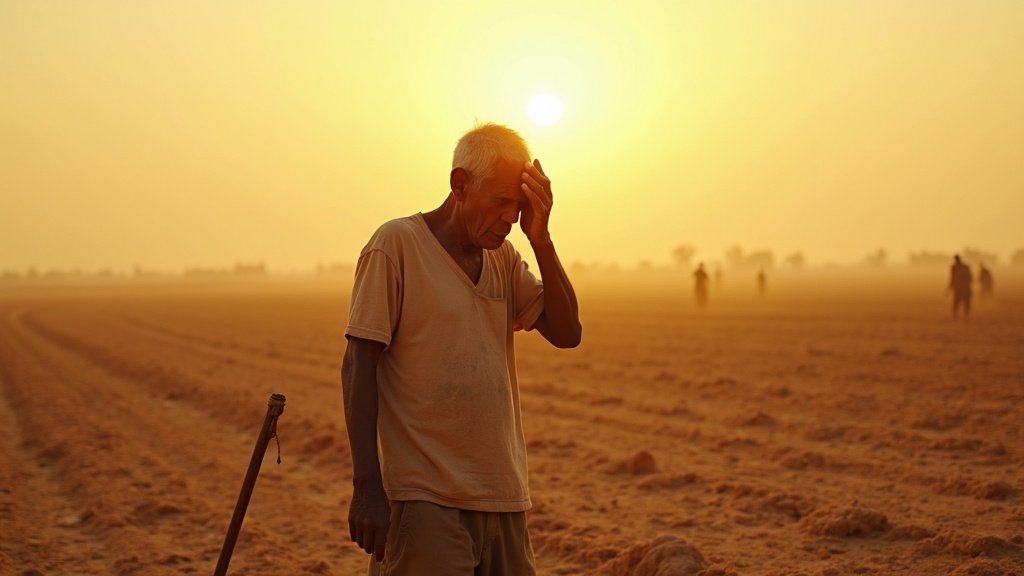GENEVA – The World Health Organization (WHO) and the World Meteorological Organization (WMO) have issued a stark warning to the world, releasing a comprehensive joint technical report and guidance to address the rapidly escalating global health and economic crisis posed by extreme heat in the workplace. Titled “Climate change and workplace heat stress,” the landmark document, published on Friday, August 22, 2025, underscores the urgent need for action as record-breaking temperatures threaten the lives and livelihoods of billions of workers worldwide.
This crucial news comes as 2024 was confirmed by the WMO as the hottest year on record, with global temperatures averaging 1.45°C above pre-industrial levels. Daytime temperatures frequently soar above 40°C, and in some regions, even exceed 50°C, a phenomenon that is becoming increasingly common. This trending environmental shift is driven by climate change, which is fueling more frequent, intense, and prolonged heatwaves, pushing human physiology and economic systems to their limits.
A Deepening Crisis for the Global Workforce
The report, drawing on five decades of extensive research, highlights that nearly half of the global population is already experiencing the adverse effects of high temperatures. This crisis disproportionately impacts manual laborers in critical sectors such as agriculture, construction, and fisheries, who are routinely exposed to dangerous conditions. Vulnerable groups, including middle-aged and older workers, those with chronic health conditions, individuals with lower physical fitness, and low-income populations in developing countries, face heightened risks.
Dr. Jeremy Farrar, WHO Assistant Director-General for Health Promotion, Disease Prevention and Care, emphasized the severity of the situation: “Heat stress is already harming the health and livelihoods of billions of workers, especially in the most vulnerable communities.” WMO Deputy Secretary-General Ko Barrett added, “Occupational heat stress has become a global societal challenge, which is no longer confined to countries located close to the Equator – as highlighted by the recent heatwave in Europe.” He further stressed that protecting workers from extreme heat is not merely a health imperative but an economic necessity.
Devastating Health and Economic Consequences
The human cost of workplace heat stress is profound. The report details a range of severe health risks, including heatstroke, dehydration, kidney dysfunction, and neurological disorders. Alarmingly, the International Labour Organization (ILO), whose findings complement the WHO-WMO report, estimates that over 2.4 billion workers worldwide are exposed to excessive heat, resulting in more than 22.85 million occupational injuries annually. In 2020 alone, an estimated 26.2 million people were living with chronic kidney disease attributable to workplace heat stress.
The economic implications are equally staggering. The report indicates a significant drop in worker productivity—a 2–3% decrease for every degree increase above 20°C in wet-bulb globe temperature (WBGT), a measure accounting for air temperature, humidity, wind, and solar radiation. This productivity loss not only affects individual incomes and family stability but also jeopardizes poverty reduction efforts and can undermine national economic output. This situation deepens existing inequalities between and within countries, as wealthier populations often have more options to mitigate heat exposure, unlike their low-income counterparts.
A Blueprint for Action and Resilience
The joint guidance provides a critical blueprint for governments, employers, and health authorities to mitigate these escalating risks. Key recommendations include:
* Developing Tailored Policies: Implement occupational heat-health policies, plans, and advisories that are specifically designed for local weather patterns, particular job roles, and worker vulnerabilities.
* Protecting the Vulnerable: Prioritize protections for at-risk groups, such as older workers, individuals with chronic health conditions, and those with lower physical fitness.
* Comprehensive Training: Educate health professionals, employers, and workers on recognizing and effectively treating heat stress symptoms, which are often overlooked or misdiagnosed.
* Stakeholder Collaboration: Foster engagement among employers, workers, trade unions, public health experts, and local authorities to co-create locally relevant and widely supported heat-health strategies.
* Practical and Sustainable Solutions: Design interventions that are not only effective but also practical, affordable, and environmentally sustainable, ensuring they can be implemented at scale.
* Embracing Innovation: Adopt technological solutions that can enhance both workplace safety and productivity.
* Basic Protections: Ensure access to adequate hydration, rest breaks, cooling areas (including air conditioning or shaded outdoor spots), and appropriate work clothing.
* Workload Adjustments: Plan work shifts to avoid peak heat hours and reduce the intensity of physical tasks during hot periods.
Joaquim Pintado Nunes, ILO’s Chief of Occupational Safety and Health, hailed the report as “a critical milestone in our collective response to the growing threat of extreme heat in the world of work.” Beyond immediate protective measures, experts also emphasize the need to address the root causes of rising temperatures by capping greenhouse gas emissions and reducing fossil fuel use.
The WHO and WMO’s report is a powerful call to action, aligning with the United Nations Sustainable Development Goals. It urges immediate and coordinated efforts to safeguard the health, safety, and dignity of the global workforce, building more resilient societies in an increasingly warm world.




